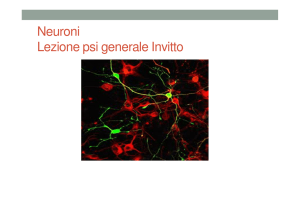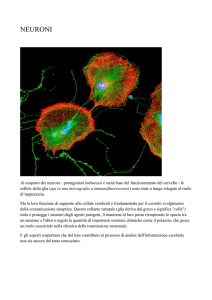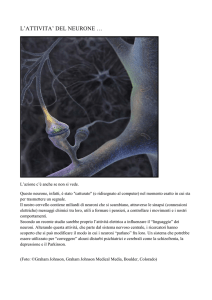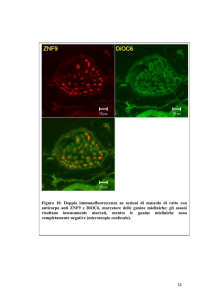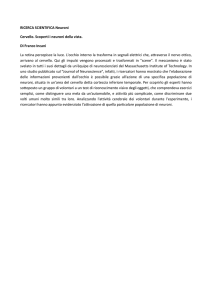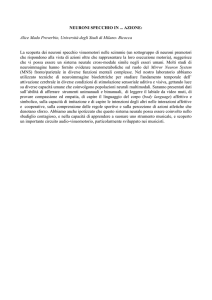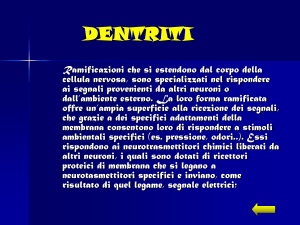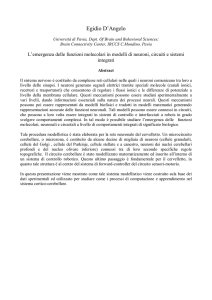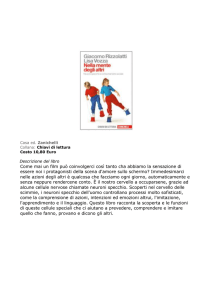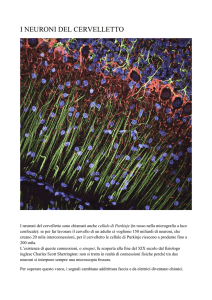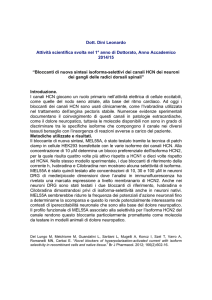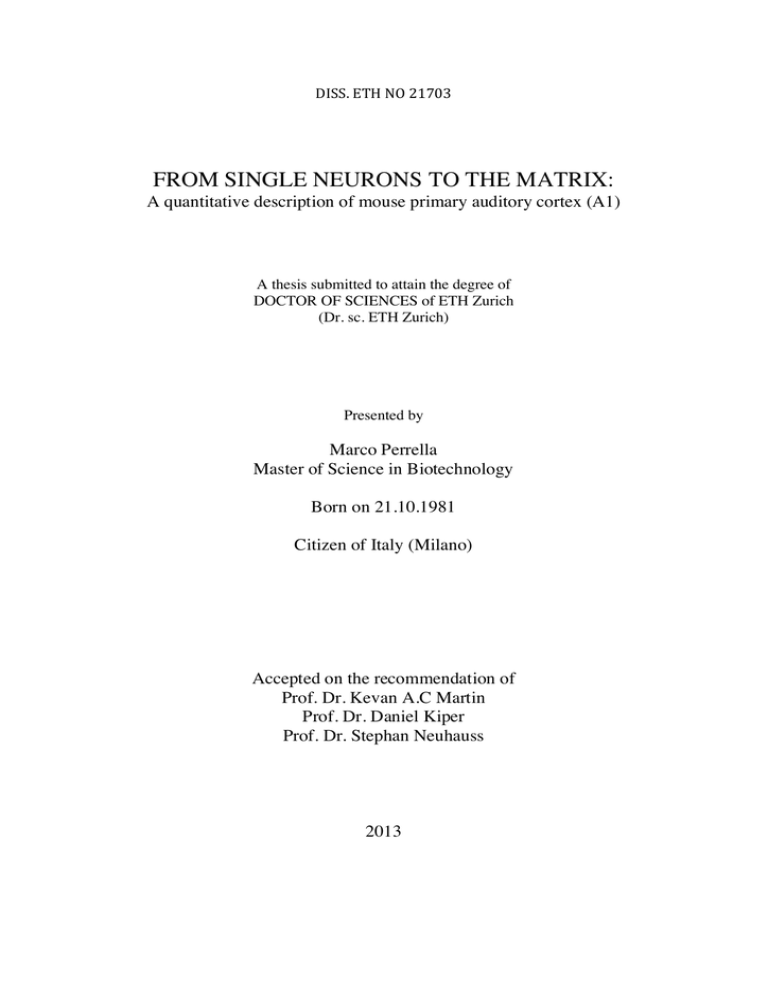
DISS.%ETH%NO%21703%
%
%
%
%
FROM SINGLE NEURONS TO THE MATRIX:
A quantitative description of mouse primary auditory cortex (A1)
A thesis submitted to attain the degree of
DOCTOR OF SCIENCES of ETH Zurich
(Dr. sc. ETH Zurich)
Presented by
Marco Perrella
Master of Science in Biotechnology
Born on 21.10.1981
Citizen of Italy (Milano)
Accepted on the recommendation of
Prof. Dr. Kevan A.C Martin
Prof. Dr. Daniel Kiper
Prof. Dr. Stephan Neuhauss
2013
Chapter 1–Introduction
!
ABSTRACT
The goal of this project is to understand if a common wiring pattern exists across the
mammalian cortices without reference to the particular computation that is performed
in that area. In order to test this canonical microcircuit hypothesis (Douglas and
Martin, 1989), a quantitative comparison between different cortical areas is required.
According to the canonical view of cortical computation, the inputs from the thalamus
reach the middle layers first and then the superficial ones. From layer 2 and 3, the
inputs are sent to the deep layers. Layer 5 mainly feeds back to subcortical structures
and layer 6 closes this loop with feedback to the middle layers.
In this work we sought to obtain a quantitative description of mouse primary auditory
cortex (AI) and to compare it with the circuit of cat V1. Cat V1 represents the only
cortical area from which a complete descriptive connectivity matrix is available. From
other areas, such as macaque V1 and rat S1, we rely mainly on qualitative data.
We believe that investigating a different cortical area, in a different species, which
lacks the columnar organization of function seen in carnivores, primates, insectivores
and ungulates (Hubel and Wiesel, 1962; Mountcastle, 1957) will reveal the ultimate
backbones of the cortical architecture. The results presented in this thesis will
contribute to the creation of a biologically relevant model of processing in A1, whose
computation and structural properties are still largely unknown in comparison to other
more investigated areas such as the visual or the somatosensory cortex.
In order to obtain such a connection matrix, a finely detailed description of the axonal
and dendritic arbors of A1 neurons is essential. Therefore, we labeled mouse A1
neurons in vivo with intracellular injections of horseradish peroxidase (HRP) and we
manually reconstructed their morphology in 3-D. The laminar location of the somata
and the axons and dendrites was based on their distance from the pia and with
reference to Nissl staining and osmicated sections. As a complementary aspect of this
project we estimated the number of neurons in A1 by staining their nuclei with an
antibody directed against the nuclear protein NeuN. By using these two main datasets
and relying on the assumption that the expected number of connections between two
neurons is directly proportional to the product of their dendritic and axonal tree
densities (known as Peter’s Rule) we have provided the first draft of the connectivity
matrix of mouse A1.
Compared to other cortical areas such as cat V1, we observed differences such as the
absence of spiny stellate cells in layer 4 and the lack of any axonal clusters in the
superficial layers. Nevertheless, the large majority of morphological types we
reconstructed displayed striking similarities with the anatomy of the neurons
recovered from different cortical areas observed in literature. It appeared that the
differences between the cortical circuits are largely due to the different proportion of
neurons which participate in the circuit, in particular by the ratio between layer 4 and
5, with the latter being extremely developed in A1.
This predominance of layer 5 in A1 could be associated with a higher requirement for
feedback projections in A1. This is in line with the idea that there is substantial
preprocessing of sound before reaching the cortex. Moreover the degree of recurrence
within laminae and the bias of the axons along the mediolateral axis suggests that the
computation that takes place in the deep layers is different from that in the superficial
!
5!
Chapter 1–Introduction
!
layers, probably underlying a solution adopted by evolution to optimize the
processing of information in the small rodent’s brain.
COMPENDIO
!
Lo!scopo!di!questo!progetto!è!di!comprendere!se!tra!le!diverse!cortecce!cerebrali!
di! diversi! mammiferi! esista! uno! schema! di! connessione! comune,! indipendente!
dal! particolare! tipo! di! computazione! svolta! in! quell’area.! Per! testare! questa!
ipotesi! dei! microcircuiti! canonici! (Douglas! and! Martin,! 1989)! è! necessario! un!
confronto!quantitativo!tra!le!diverse!aree!corticali.!!
!
In!accordo!con!l’idea!dei!circuiti!canonici!sottostanti!la!computazione!corticale,!le!
informazioni!provenienti!dal!talamo!prima!raggiungono!gli!strati!intermedi!e!poi!
arrivano! a! quelli! più! superficiali.! ! Dagli! strati! 2! e! 3! queste! informazioni! sono!
inviate!agli!strati!più!profondi.!!Lo!strato!5!agisce!principalmente!come!feedback!
su!strutture!subcorticali!e!lo!strato!6!chiude!questo!circolo!con!un!feedback!agli!
strati!intermedi.!
!
La!corteccia!primaria!di!gatto!(V1)!costituisce!l’unica!area!corticale!per!la!quale!
matrice!di!connettività!è!disponibile.!!Per!altre!aree!come!la!V1!di!macaco!e!la!S1!
di!ratto,!solo!una!descrizione!qualitativa!è!disponibile.!!
!
Con!questo!lavoro!abbiamo!mirato!ad!ottenere!una!descrizione!quantitativa!della!
corteccia!uditiva!primaria!di!topo!(A1)!e!di!compararla!con!il!circuito!di!gatto!V1.!
Confidiamo! che! investigando! una! diversa! area! corticale,! in! una! diversa! specie!
priva! di! quella! organizzazione! colonnare! ! osservata! in! carnivori,! primati,!
insettivori! e! ungulati! (Hubel! and! Wiesel! 1962;! Mountcastle,! 1957)! saremo! in!
grado!di!chiarire!lo!scheletro!dell’architettura!corticale.!!I!risultati!presentati!in!
questa!tesi!contribuiranno!alla!creazione!di!modelli!biologici!rilevanti!dell’A1,!la!
cui!computazione!e!le!proprietà!strutturali!sono!largamente!sconosciute!rispetto!
ad!altre!aree!più!studiate,!come!la!corteccia!visiva!e!somatosensoriale.!!
!
In! modo! da! ottenere! una! matrice! di! connettività,! una! descrizione! dettagliata!
delle! ramificazioni! assonali! e! dendritiche! dei! neuroni! di! A1! è! essenziale.! Per!
questo!motivo!abbiamo!marcato!neuroni!di!A1!attraverso!iniezioni!intracellulari!
di! perossidasi! di! rafano! (HRP)! e! abbiamo! manualmente! ricostruito! la! loro!
morfologia!in!3fD.!La!posizione!laminare!dei!soma,!degli!assoni!e!dei!dendriti!nei!
è! stata! basata! sulla! loro! distanza! dalla! pia! e! in! seguito! a! confronti! tra! sezioni!
ottenute! con! colorazione! di! Nissl! e! osmicate.! ! Come! parte! complementare! a!
questo!progetto!è!stato!stimato!il!numero!di!neuroni!in!A1!marcando!i!loro!nuclei!
con!un!anticorpo!diretto!contro!la!proteina!nucleare!NeuN.!!
!
Usando!questi!due!principali!dati!e!contando!sull’assunzione!che!e!il!numero!di!
connessione! tra! due! neuroni! è! direttamente! proporzionale! al! prodotto! dei! loro!
dendriti! ed! assoni! (nota! come! Regola! di! Peters)! siamo! stati! quindi! in! grado! di!
fornire!una!prima!versione!della!matrice!di!connettività!dell’A1!di!topo.!!
!
!
6!
Chapter 1–Introduction
!
Rispetto!ad!altre!aree!corticali!quali!V1!di!gatto,!abbiamo!riscontrato!differenze!
nell’assenza! di! neuroni! stellati! nel! 4! strato! e! nella! mancanza! di! ogni! evidente!
raggruppamento!assonali!negli!strati!superficiali.!Ciononostante!la!maggior!parte!
delle! morfologie! neuronali! ricostruite! hanno! mostrato! particolari! similitudini!
con! l’anatomia! dei! neuroni! ricostruiti! dalle! diverse! aree! corticali! osservabili! in!
letteratura.!Da!questi!dati!emerge!che!la!maggior!differenza!tra!i!diversi!circuiti!
corticali! risiede! nel! diverso! numero! di! neuroni! che! partecipa! nel! circuito! ed! in!
particolare!nel!rapporto!del!numero!di!neuroni!tra!strato!4!e!5,!!con!quest’ultimo!
particolarmente!sviluppato!in!A1.!Questa!predominanza!dello!strato!5!potrebbe!
essere!associata!alla!maggiore!richiesta!di!proiezioni!con!funzione!di!feedback+in!
A1.!Questo!è!in!linea!con!l’idea!che!i!suoni!siano!sottoposti!ad!un!maggiore!pref
processing! prima! di! raggiungere! la! corteccia.! Inoltre! il! grado! di! connessioni!
reciproche!all’interno!dei!diversi!strati!e!l’orientamento!degli!assoni!lungo!l’asse!
mediolaterale! suggeriscono! che! un! processamento! di! informazioni!
qualitativamente! diverse! potrebbe! avvenire! tra! strati! superficiali! e! profondi,!
probabilmente! evidenziando! una! soluzione! adottata! dall’evoluzione! per!
ottimizzare! il! processamento! delle! informazioni! nelle! ridotte! dimensioni! del!!
cervello!dei!roditori.!!
!
!
!
!
!!
!
7!

